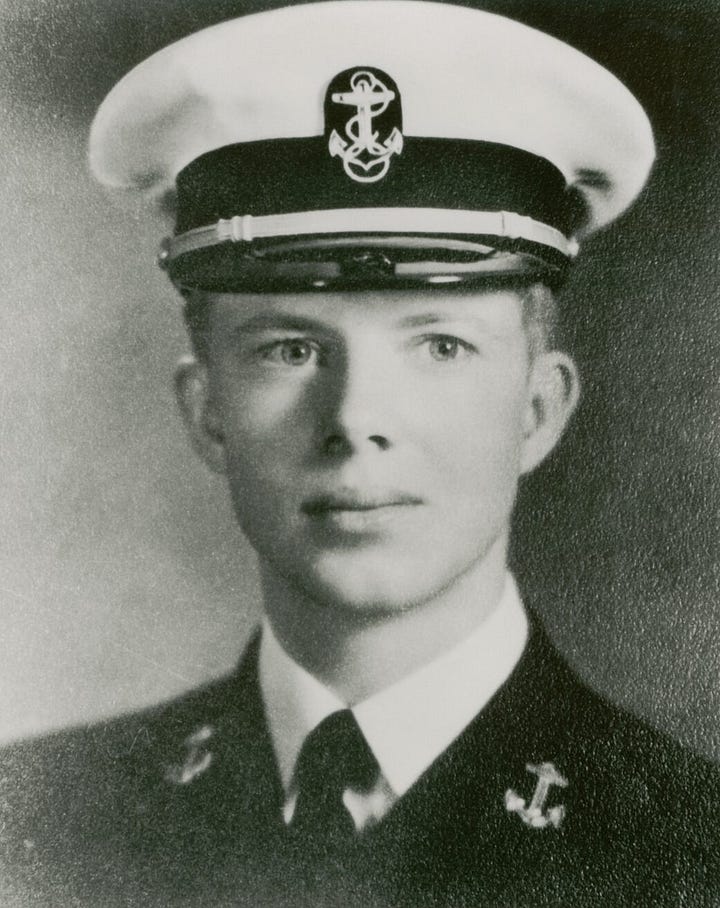Over the past week, America has paid its respects to the country’s 39th president, Jimmy Carter, who passed away on December 29, 2024 at the age of 100. I don’t have too many memories of President Carter, as I was nine when he was elected, but I do remember how elated my parents were to see him and his wife Rosalynn—everyday farming people from a small town—move into the White House.
Raised in Plains, Georgia, Carter’s family owned a peanut farm and most of his playmates were the children of the Black sharecroppers his father hired. Carter grew up being rather open-minded in terms of race, even as the country was gripped by segregation, racial violence, and social injustice. As president, he was viewed both harshly and favorably. Yet, most would agree that he was a genuinely caring human being, who post-presidency, gave tirelessly to his community, particularly through his work with Habitat For Humanity.
So, as the farewell tributes dwindle, I have one final accolade I’d like to add; a piece of information I haven’t heard anyone talk about but something I came across several years ago during my book research.
While Carter was a student at the US Naval Academy, his life briefly intersected with another midshipman by the name of Wesley Brown. Perhaps you’ve heard of him. Or not, because he wasn’t a household name.


Wesley Anthony Brown was the first Black graduate of the Naval Academy, attending 1945 through 1949. Brown’s graduation is significant because he was not the first Black student who’d been admitted into the school.
After the Civil War during Reconstruction, three other Black students were appointed to the academy, the first being John Conyers who was born into slavery. He arrived at the school in 1872. However, none of these young men made it very far and ultimately, each one withdrew. Not because they weren’t smart or capable enough. Rather, they were unable to bear the persistent harassment that came at the hands of their fellow White midshipman and the faculty, who were hell bent on driving the Black midshipman out of the academy.
The Black students endured racial slurs, physical attacks, and were weighed down with unwarranted demerits to the point where these young men feared for their personal safety and mental wellbeing.
Two more Black students were appointed to the academy in the 1930s, but also left under the same unbearable circumstances. Then in 1945, Wesley Brown was carefully chosen and appointed to the academy by New York Congressman Adam Clayton Powell.
Brown, who’d graduated from segregated Dunbar High School in Washington, DC and studied at Howard University, was said to the be the right person for the right time. Brown accepted his “assignment” with enthusiasm because he welcomed the challenge.
And a challenge he got.
Brown was subject to the same level of harassment and scrutiny, but he also received a bit of encouragement from some of his classmates, as well as Jimmy Carter, a senior midshipman at the time. The two were teammates on the school’s cross-country team and spent hours talking and getting to know each other. Carter also came by Brown’s room to see how he was doing and urged him to “hang in there” (the military was desegregated in 1948).
Although Brown’s time at the academy was difficult and lonely, he credits his teachers and Junior ROTC instructors from Dunbar for instilling in him an unbreakable sense of confidence and determination.
Dunbar was the top Black high school and one of the best high schools overall in the country up until the 1950s. If you’ve ever spoken with anyone who went there during that golden era, you know they did not mess around. Those young men and women were wholly equipped—ready to take on the world, and taught by a faculty filled with educators who’d earned PhDs.
After graduating from the Naval Academy, Brown served in the Navy’s Civil Engineering Corps and retired as a lieutenant commander in 1969. In his honor, the academy built the state-of-the-art Wesley A. Brown Field House in 2008, dedicating the 140,000 square-foot sports arena to their first Black graduate. Moreover, a book, Breaking the Color Barrier: The U.S. Naval Academy's First Black Midshipmen and the Struggle for Racial Equality (2005), was written about Brown’s experience at the academy, and none other than President Jimmy Carter wrote the opening words:
"My first personal experience with racial integration began when an African American student, Wesley Brown, entered the U.S. Naval Academy in 1945. We both ran cross-country during the year that we spent together in Annapolis. A few members of my senior class attempted to find ways to have him discharged, but Brown's good performance prevailed and he became the Academy's first black graduate…"
—Jimmy Carter
Brown has said the former president was “genuine” as a 21-year-old student and remained genuine throughout his life. Brown died in 2012 in Silver Spring, Maryland. He was 85 years old.
Kelly’s debut book, THE WEATHER OFFICER, will be available in 2025.





Thanks for this
I appreciate this insight into the life of Jimmy Carter. You bring American history so very close to home. Thank you, Kelly!